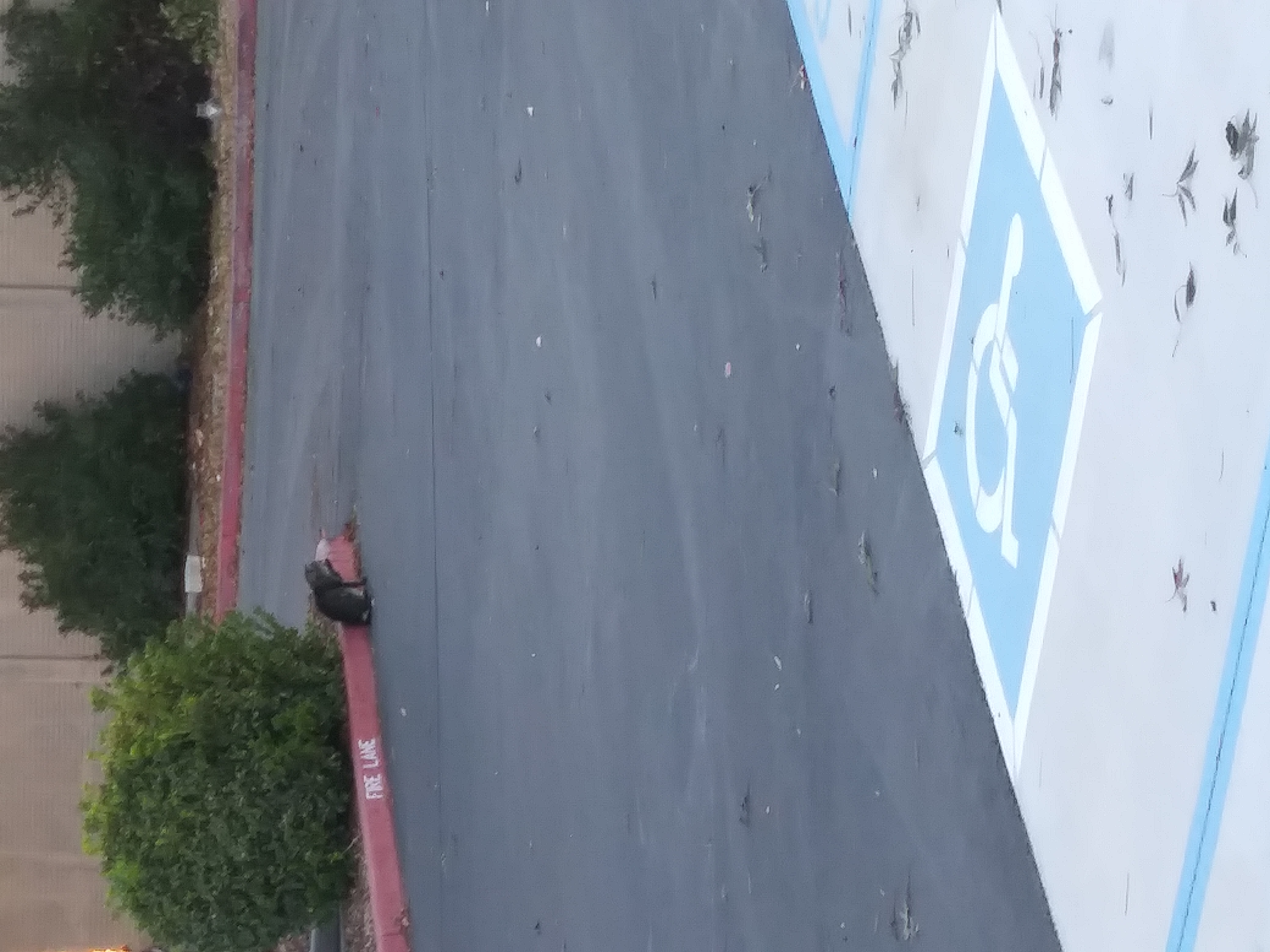Title
Feral Cats at the County Fair Fashion Mall in Woodland
Author
Jaime Brito
American River College, Geography 350: Data Acquisition in GIS; Fall 2023
Abstract
Cats make the purrfect pet, but there is a downside to them: they are an invasive species. I commuted to Woodland to observe the feral cats myself, I also used my phones cameras to take photographs of the cats. I observed ~8 feral cats and used an image to present my data.
I ran into a few difficulties, but I easily overcame them; overall, this project was a complete success. I found several solutions to help curb the feral cat problem during this project.
Introduction
Do you have daily stress and/or anxiety? Do you want to heal faster when you have a broken
bone? Do you want to be loved unconditionally? If you answered yes to any or all of these
questions, then you should get a cat. Domestic cats have healing powers.
According to
Kwok, owning a cat lowers cardiovascular disease and lowers your risk of a heart attack; and
according to Kornreich , petting a cat lowers cortisol, which is a stress hormone. Cats will love
you until the day they or you die, I know from personal experience. Cats are loving, caring,
selfless, protectors, capable of great feats; but there is a dark side to these purrfect pets,
there are so many free-range, abandoned, feral, and feral colonies of domestic cats that diseases such as FIV, FeLV, rabies, etc. are rampant among them and they are reducing the number of species in their environments, thus destroying their habitats. In this project, I will go to the east side of the County Fair Fashion Mall on E. Gibson Rd. in Woodland because there are free-range and feral cats in the area. I will drive to the County Fair Fashion Mall in Woodland and gather data on the cats myself. I will be using my phone's camera to take pictures and videos of the cats.
Background
I already had a strong background/knowledge in cats because I love them so much, I had already read most of the literature coming up in Google. For this project, found a few articles that I have not already read.
One new article about cats is from University of Texas at Austin , it's about how cats are invasive species and brings up the facts that they are on every continent except for Antarctica, and that they impact ecosystems. It also brings up a story about a cat named Tibbles: In 1894, a cat named Tibbles traveled with her owner to an untouched island south of New Zealand…The Stephen Island wren, a small flightless bird, was endemic to this island. Predator vs. prey (that hasn't had any predator before Tibbles); the wren is now extinct.
If one cat can eradicate an entire species of bird, imagine what hundreds-to-thousands of them could do. This articles brings up that cats have traveled all over the world, are on almost all of the continents, and can easily wreak havoc in an ecosystem; all of this is followed up with a story about how a single cat decimated a species of bird.
I also visited the CDC website to learn about the numbers of rabies cases. The site proves how easily disease is spread among feral cats, with them having the highest number of cases in 2018, 241 cases; this is 45% higher than all other domestic animals combined.
Methods
I chose to gather my data in Woodland at the County Fair Mall on E. Gibson Rd. because I commute there every week so it would be convenient for me and I already knew that there were feral/stray cats in the area from talking with the employees in the building I go to every week, and I could collect my data in the field. The ways that I would collect data (feral cats) in Woodland are: 1) waking up very early to be able to commute to Woodland, which is ~40 minute drive from where I live. The employees informed me that the cats are usually seen at about 6 am. This is because cats are crepuscular, active during dawn and dusk. 2) I would observe them and count them. 3) I would use my phones to take photographs and videos of the cats (so I do not count the same one(s) more than once).
Since there were houses/neighborhoods directly behind Study Area1, I had to be able to distinguish the difference between the feral cats and the outside pet cats. Here are the criteria that I used to distinguish feral cats from pet cat: 1) normally, cats in general, are skittish; but some pet cat will allow a person to pet them and get close to them and a feral cat will never do this. 2) A house pet cat will run away to its home, where it feels safe; a feral cat will run and hide where it lives and/or run to the other cats in their colony.
Results
The format that I used for presenting my data is picture. I used an image to present my data because it was the easiest way to present my data and it makes it visible for users to see it.

Figures and Maps
Map Of Study Area

Study Area #1

Study Area #2

Image Of Cat Colony In Study Area#1
.jpg)
Image Of Cat In Study Area #2
.jpg)
Image Of Cat Outside Of Study Areas

Analysis
Overall, I observed a total of ~8 feral cats. Two were seen in study location 2, five were seen in study location 1 (this is a colony of feral cats), and one was observed outside of both of the study areas. The things that were successful were: I observed the cats, and got photographs and videos of them. Things that were difficult were: being able to keep track of the cats because it was so dark and the lighting was very dim, it was hard to be able to keep track of them; being able to differentiate between free-range cats (pet cats that go outside) and feral cats. I overcame the difficulties by taking pictures of the cats, observing them and remembering them, having videos of the feral cat colony, and differentiating between the free-range cats and feral cats by what I mentioned in the Methods section.
Conclusions
Some solutions to the feral cat problem are:
1) Keep your pet cats inside. House cats have a longer life span than free-range and feral cats (house cats life spans depends on the breed, but average life spans are between 15-20 years and free-range/feral cats life spans are ~2- years) . This is due to disease, humans, cars, predation, other animals, other danger, etc.
2) If you want your cats to go outside, at least get them spayed or neutered to prevent overpopulation of cats. To prevent diseases spreading to your cat(s) get them vaccinated.
3) TNR (Trap-Neuter-Release) program, this program traps feral cats, neuters, vaccinates, and tips one ear (the tip of an ear is cut off to let others know that the cat is already spayed or neutered) and releases them back to their colonies. Being spayed or neutered means the cats cannot reproduce, thus curbing the amount of feral cats. Being vaccinated means less disease is spread.
4) Do NOT abandon your pet cat under any circumstances. They are used to being indoors and will most likely not die very quickly because they don't know the dangers of being outside. You release a predator into an environment that did not have one before and it will wreak havoc in the environment. It also increases the number of feral cats/feral cat colonies. If you cannot keep your pet anymore, you have better options such as: re-homing your cat with a friend, family member, or someone else that would take care of your baby. You can take your cat to a non-kill shelter, this way it could get adopted by a loving/caring person/family. Even a kill shelter is humane, cats that are not adopted, are too old, too sick, have low-to-no quality of life, etc. will not have to live the rest of their lives in misery, depression, and loneliness. Depending on your cat's circumstances, both types of shelters are humane.
5) Do NOT feed/water the feral cat(s)/feral cat colony(ies), this could make a feral cat sanctuary; that would be disastrous for the environment.
References
Elmer, Nicole L. Pets as Invasive Species: Cats.
Biodiversity Center, 30 May 2023, biodiversity.utexas.edu/news/entry/pets-as-invasive-species-cats.
Kornreich, Bruce. Pet Your Cat to Reduce Stress.
Cornell University College of Veterinary Medicine, 14 Oct. 2022, www.vet.cornell.edu/pet-your-cat-reduce-stress#:~:text=In%20fact%2C%20a%20recent%20study,cats%20and%20dogs%20decreases%20stress.
Kwok, Ka Ki, et al. SIOWFA15: Science in Our World: Certainty and Controversy.
SiOWfa15 Science in Our World Certainty and Controversy, 21 Oct. 2015, sites.psu.edu/siowfa15/2015/10/21/cats-and-their-magic-power/.
Domestic Animals.
Centers for Disease Control and Prevention, Centers for Disease Control and Prevention, 6 Apr. 2020, www.cdc.gov/rabies/location/usa/surveillance/domestic_animals.html#:~:text=The%20number%20of%20rabid%20cats,a%208.3%25%20decrease%20from%202017.




.jpg)
.jpg)
